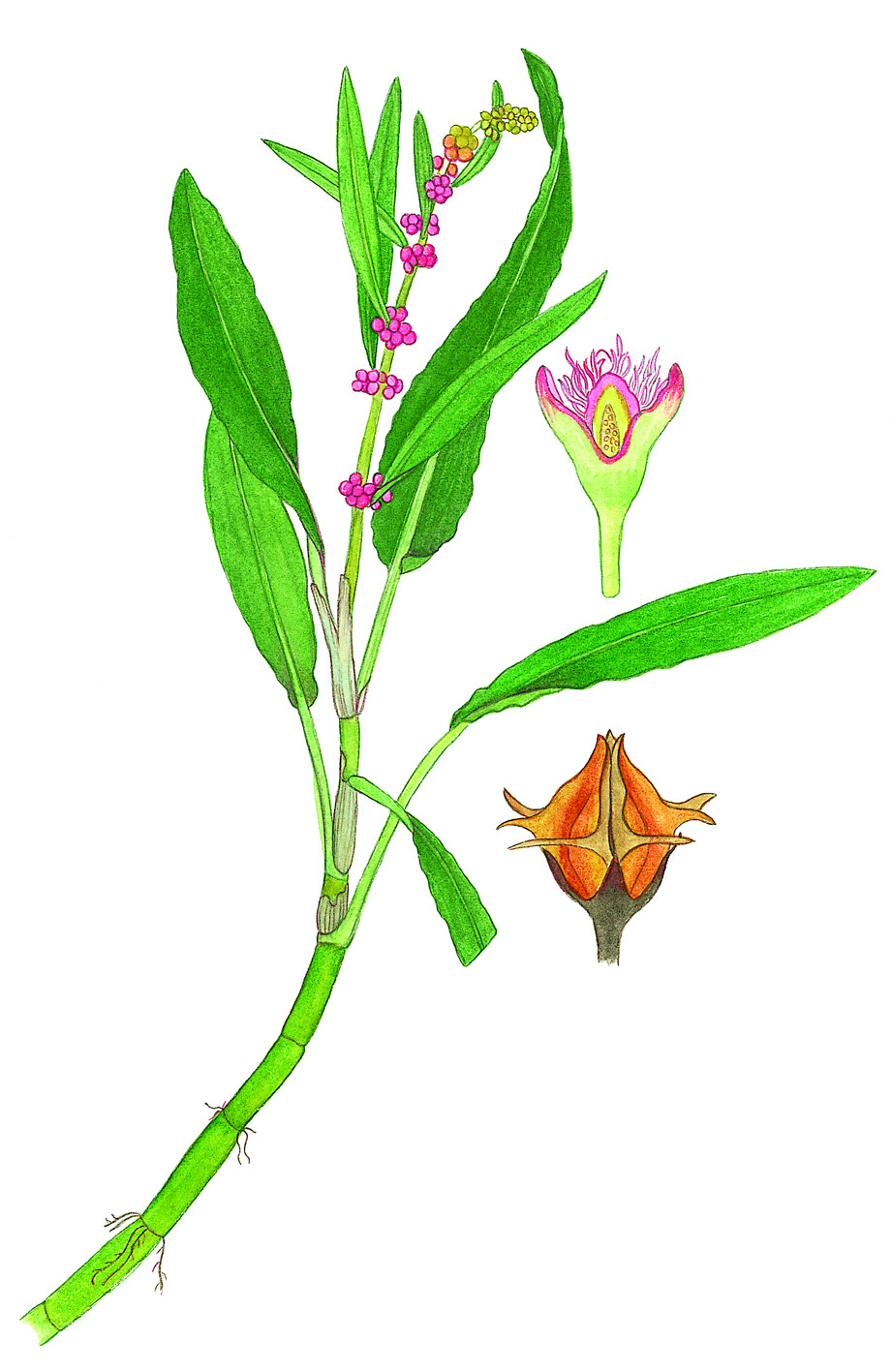Rumex bidens
R.Br. Mud DockAquatic or semi-aquatic perennial, stems freely rooting from lower nodes, procumbent or forming sometimes extensive floating mats and then with internodes commonly strongly inflated, flowering branches ascending to c. 50 cm high. Leaves all cauline, with petioles usually shorter than lamina; lamina oblong to narrowly lanceolate, to 20 cm long, 3 cm wide, tapered to truncate at base; margins plane or weakly crisped; upper leaves reduced and often sessile. Inflorescence erect, simple or with few ascending branches, to c. 40 cm long; flower 'whorls' separated by up to c. 5 cm below, crowded above, most subtended by a leaf. Fruiting valves ovate or rhombic, 4–6 mm long, 3–5 mm wide (excluding teeth), each with 1 or 2 spreading or recurved spine-like teeth near base, and an irregular callosity in the basal two-thirds; fruiting pedicel 1.5–2 times as long as valves, jointed in the lower third. Nut c. 3 mm long. Flowers Oct.-Feb.
Wim, GleP, Brid, VVP, VRiv, MSB, MuF, GipP, OtP, WaP, Gold, CVU, GGr, DunT, NIS, EGL, HSF, HNF, MonT. Also SA, NSW, Tas. Occurs at margins of lakes, billabongs, slow-moving rivers and streams and other seasonally wet depressions, mostly in the south, scattered in northern Victoria (e.g. Swan Hill, Nathalia district, Horsham, Walwa).
Walsh, N.G. (1996). Polygonaceae. In: Walsh, N.G.; Entwisle, T.J., Flora of Victoria Vol. 3, Dicotyledons Winteraceae to Myrtaceae, pp. 272–295. Inkata Press, Melbourne.
 Spinning
Spinning

